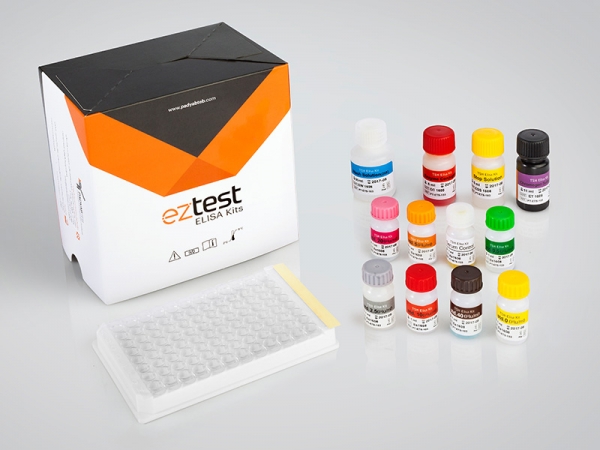| Name | T Uptake ELISA Test |
| Full name | Human T3 Uptake ELISA Test Kit |
| Category Name | Thyroid ELISA kits |
| Test | 96 |
| Method | ELISA method: Enzyme Linked Immunosorbent Assay |
| Principle | Competitive ELISA |
| Detection Range | 15 - 45% Uptake |
| Sample | 25 λ |
| Total Time | ~60 min |
| Shelf Life | 12 Months from the manufacturing date |
T3 Uptake ELISA Kit description:
The Diagnostic Automation T3 Uptake ELISA is intended for the Measurement of the Total Amount of Binding Sites Available for the Thyroid Hormones in Human Serum or Plasma by a Microplate Enzyme Immunoassay.
Material Provided with T3 Uptake ELISA Kit:
1. Human Serum References: Four human serum based reference standards
2. T4 Uptake Enzyme Reagent: triiodothyronine -HRP conjugate
3. Microplate: sheep anti-thyroxine serum coated wells
4. T4-Uptake Conjugate Buffer
5. Wash Solution Concentrate
6. Substrate A: TMB in buffer
7. Substrate B: H2O2 in buffer
8. Stop Solution: 1N HCl
9. Product Instructions
Materials Required, not Provided:
1. Precision pipettes
2. Distilled or deionized water
3. EIA kit Microplate Washer
4. EIA kit Microplate Reader with a 450 nm
Introduction
Most thyroxine in blood circulation is predominantly bound to the thyroxine binding globulin (TBG) and to a lesser extent to the thyroxine binding prealbumin and albumin. A very small percentage of thyroxine remains unbound in blood as free. These unbound fractions of the thyroid hormone are thought to be responsible for the biologic activity. The metabolic processes are regulated entirely by the concentration of the free thyroid hormones, which are inversely related to the levels of the binding proteins. Patients with a hyperthyroid condition have increased levels of thyroid hormones and thus, a decreased number of unsaturated binding sites on the thyroid binding proteins. Patients with a hypothyroid condition have decreased levels of thyroid hormones and consequently, an increased number of unsaturated binding sites on the thyroid binding proteins. In some pathological conditions, concentrations of serum proteins are increased that results in the increases in total concentration of thyroid hormones (especially T4), while thyroid function is normal. Determination of thyroid hormone withdrawal (T-Uptake) along with determining the total amount of thyroid hormones in certain circumstances is a better indicator for evaluating thyroid function.
Principle of the assay
This ELISA test is based on the use of specific monoclonal antibody against a distinct antigenic determinant on the intact T4 molecule. Anti- T4 monoclonal antibody with a certain concentration is used for coating the wells. A certain amount of serum and enzyme conjugate containing the bounded T4 to HRP-T4 enzyme and thyroxine is added to the wells and then are mixed. The present thyroxine competes for binding to the coated antibody and serum proteins; also, Thyroxine in the sample competes with the enzyme conjugate and present thyroxine for binding sites. After 45-minute incubation at room temperature, the well is washed with washing solution. Then substrate solution and chromogen solution are added and incubated for 15 minutes, resulting in the development of blue color. The color development is stopped with the addition of stop solution, and the resulting yellow color is measured spectrophotometrically at 450 nm. The concentration of T-Uptake is inversely proportional to the color intensity of the test sample.



